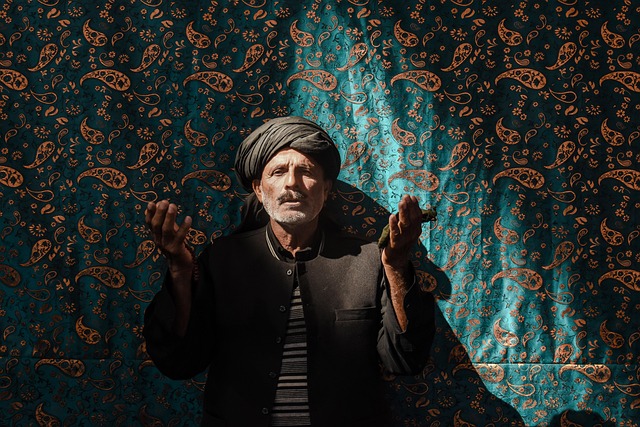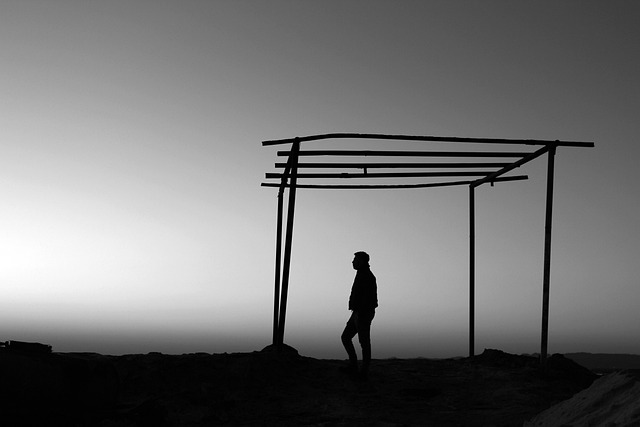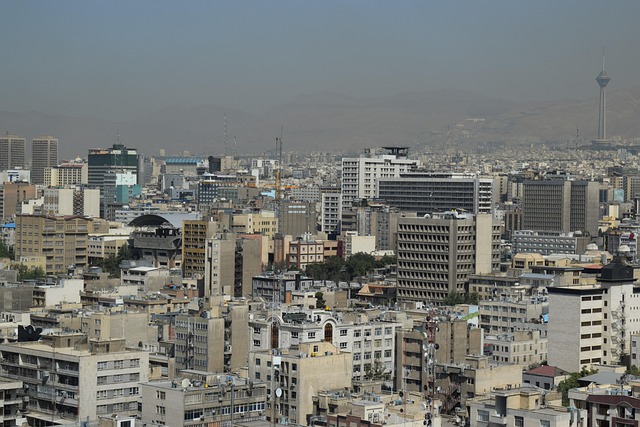Traveling to Iran offers a rich cultural experience requiring an understanding of customs and etiquette, including respecting personal space, learning basic Farsi greetings, dressing modestly at religious sites, and embracing local traditions. Urban transportation challenges include heavy traffic and limited options; solutions involve modern infrastructure improvements and traditional methods like carpooling. Language barriers can be navigated through practical tips such as prioritizing essential phrases and seeking local assistance. Accommodations range from modern hotels to traditional guesthouses, with renowned local hospitality. Safety and health considerations include understanding local laws, dressing modestly, staying hydrated, choosing reputable restaurants, and having travel insurance. Iran naturally offers breathtaking landscapes, rich culture, and historical marvels, best explored through expert guidance and responsible tourism practices.
Traveling to Iran presents a unique blend of enchanting history, vibrant culture, and stunning landscapes—yet it’s not without its challenges. Navigating the complexities of customs regulations, understanding local etiquette, and dealing with often inconsistent transportation services can significantly impact any trip. This article delves into practical solutions for solving common travel issues in Iran, empowering visitors to embrace their journey fully. By drawing on extensive experience and authentic insights, we offer valuable guidance tailored to enhance your exploration of this captivating country naturally.
- Understanding Iran's Cultural Norms: A Traveler's Guide
- Navigating Transportation Challenges in Iran's Cities
- Decoding Language Barriers: Tips for Effective Communication
- Accommodations in Iran: Finding Safety and Comfort
- Exploring Iran's Hidden Gems: Off-the-Beaten-Path Adventures
- Staying Safe and Healthy During Your Iranian Journey
Understanding Iran's Cultural Norms: A Traveler's Guide

Traveling to Iran presents a unique blend of excitement and challenges, especially for those unfamiliar with its rich cultural norms. Understanding local customs and etiquette is essential for a rewarding journey in this captivating country. From interacting with locals to exploring iconic landmarks like the Qom Shrine of Imam Reza, Isfahan’s cultural heritage, or Kermanshah’s ancient ruins, awareness of Iran’s societal fabric can transform your experience.
Iranians are known for their warmth and hospitality, often extending gestures of kindness towards visitors. Respecting personal space and understanding non-verbal cues are crucial in a culture that values modesty and discretion. For instance, maintaining appropriate eye contact during conversations, especially with the opposite sex, should be done discreetly. Greetings are an integral part of Iranian society; a simple “Salam” (hello) accompanied by a slight nod or bow is customary. Learning a few basic phrases in Farsi, such as “Dastetan bekheir” (nice to meet you), can go a long way in fostering positive interactions.
When visiting religious sites like mosques and shrines, dressing modestly is not just respectful but also a practical consideration. Iran’s cultural norms dictate that women should cover their hair with a hijab and wear conservative clothing. Men are expected to wear long pants and shirts that cover the elbows. These guidelines ensure a welcoming atmosphere for all visitors while preserving the sanctity of religious spaces like the Qom Shrine, one of Shia Islam’s most sacred sites.
Exploring Iran’s cultural heritage requires an open mind and a willingness to immerse yourself in local traditions. For instance, when visiting Isfahan, take a moment to appreciate the intricate architecture of the city’s historic sites. Kerman’s ancient ruins offer a glimpse into the country’s rich historical tapestry. By embracing these cultural nuances, travelers can gain deeper insights into Iran’s history, art, and way of life, making their journey truly memorable. Visit us at farsi language grammar rules for more on navigating these cultural riches.
Navigating Transportation Challenges in Iran's Cities

Navigating Iran’s urban transportation landscape presents unique challenges for both locals and visitors. The vast and diverse country boasts vibrant cities like Tehran, known for its bustling streets and a growing public transit system, as well as more laid-back provincial towns that offer a glimpse into traditional Iranian life. However, issues such as heavy traffic congestion, inadequate infrastructure, and limited public transportation options can make getting around a significant hurdle. For instance, in Iran’s largest city, Tehran, peak-hour traffic delays have been documented at over 40 minutes, with some routes experiencing even longer bottlenecks.
One factor contributing to these challenges is the country’s unique demographic makeup and cultural preferences. The basij student movement, known for its conservative leanings, has occasionally played a role in shaping urban mobility dynamics. Additionally, Iran’s rich cultural heritage influences local travel behaviors; many residents appreciate Persian poetry during their daily commutes, adding a layer of artistic expression to their journey. Gilan Province, renowned for its natural beauty and charming coastal towns, serves as a prime example of how diverse landscapes can create unique transportation needs.
Practical solutions involve combining traditional and modern transportation methods. Many Iranians rely on private cars due to public transit limitations, leading to congestion. Encouraging carpooling and implementing dynamic traffic management systems could help alleviate this issue. Moreover, investing in expanding and improving public transport networks, including buses, metro trains, and bike-sharing programs, is essential for sustainable urban mobility. For tourists, embracing local transportation options like traditional taxis or modern ride-hailing apps can provide authentic experiences while also reducing the strain on Iran’s vibrant yet overstretched infrastructure. Opting for a bazaar shopping experience, for instance, allows travelers to immerse themselves in the city’s rhythm while navigating through bustling streets and alleys.
Decoding Language Barriers: Tips for Effective Communication

Navigating Iran involves more than just planning your itinerary; it requires decoding a unique blend of cultural nuances and language barriers. Effective communication is key to an enriching experience in this ancient land, where a vibrant Saba era history and spiritual centers like Qom intertwine with modern architecture in Tehran.
The Persian language, spoken fluently by locals, can seem intimidating at first. Simple greetings and phrases are often crucial for connecting with shopkeepers during your bazaar shopping experience, or for navigating public transportation. While many Iranians, especially younger generations, speak some English, proficiency levels vary widely. To bridge this gap, consider these practical tips:
Prioritize essential phrases: Focus on basic greetings, asking for directions, and simple questions about prices or services. Apps offering Persian language guides can be invaluable tools during your travels.
Embrace non-verbal cues: Body language, gestures, and facial expressions play a significant role in communication. A friendly smile, nodding, or using hand signals can facilitate understanding even when words fail.
Seek local assistance: Don’t hesitate to ask for help from shopkeepers, taxi drivers, or fellow travelers. Many Iranians are eager to share their knowledge and provide recommendations, creating opportunities for meaningful interactions.
Enroll in language classes: For a more immersive experience, consider taking a Persian language course before your trip or upon arrival. This can significantly enhance your ability to connect with locals and uncover hidden gems beyond the tourist trail. Give us a call at Tehran’s modern architecture firm for personalized travel planning advice tailored to your needs.
Accommodations in Iran: Finding Safety and Comfort

Traveling to Iran presents a captivating blend of rich history, stunning landscapes, and vibrant culture. However, navigating accommodation options can be a common challenge for visitors. To ensure safety and comfort during your stay, it’s crucial to understand the unique context of Iran’s hospitality sector. The country’s diverse geography, from majestic mountains to desert oases, offers a variety of accommodations fitting every budget and preference.
Iran is renowned globally for its exquisite rugs and art, reflecting the same attention to detail in its guesthouses and hotels. Traditional Persian hospitality prioritizes warmth and generosity, translating into welcoming atmospheres despite language barriers. However, due to the country’s unique social dynamics, some areas may not be suitable for solo female travelers, prompting a need for informed choice. The presence of the Basij student movement, a volunteer group often visible in public spaces, adds an element of caution when selecting accommodations, especially for unaccompanied visitors.
When exploring options, consider booking through reputable local agencies or online platforms that cater to international travelers. Utilizing resources like travel blogs and forums from trusted sources can offer valuable insights into safe and comfortable stays. For instance, regions with higher tourist infrastructure, such as Tehran and Isfahan, provide a wider range of choices, including modern hotels and guesthouses catering to various needs. On the other hand, areas rich in cultural heritage, like Shiraz or Yazd, offer traditional homestays and historical inns that give a glimpse into Iran’s past.
For those seeking authentic experiences, engaging with local tour operators who can vouch for safe and reputable accommodations is advisable. “Find us at Susan Gateway to Persia,” a well-established travel brand, offers tailored tours and stays, ensuring visitors not only find comfortable lodging but also immerse themselves in the art, history, and warmth that define Iran’s unique hospitality. By considering these factors and leveraging available resources, travelers can confidently embark on their Iranian adventure, uncovering the country’s enchanting tapestry and leaving with unforgettable memories.
Exploring Iran's Hidden Gems: Off-the-Beaten-Path Adventures

Iran, a land of rich history and cultural heritage, offers more than just iconic landmarks and bustling cities for travelers seeking authentic experiences. Exploring Iran’s hidden gems allows visitors to uncover the country’s lesser-known but captivating destinations, providing an off-the-beaten-path adventure that delves into its diverse landscapes and ancient past. One such region is Sistan Baluchestan province, a vast area with a unique blend of natural wonders and historical sites. This remote province, known for its rugged mountains, sandy deserts, and cultural diversity, beckons adventurers eager to venture beyond the typical tourist routes.
The history of Iran, dating back to the Saba era, is woven into the very fabric of this region. Ancient civilizations thrived here, leaving behind remnants that speak to a glorious past. For instance, the historic city of Zabol, with its ancient architecture and cultural heritage, offers a glimpse into the region’s rich tapestry. Similarly, exploring the Makran Coast, renowned for its dramatic cliffs and hidden coves, transports visitors back in time, echoing tales of trade routes and maritime adventures. These off-the-beaten-path destinations provide an opportunity to engage with local communities, immerse oneself in authentic traditions, and discover a side of Iran that few tourists ever witness.
To fully embrace these unique experiences, travelers should consider engaging with local tour operators who can navigate the region’s complexities. A well-guided trip through Sistan Baluchestan province might include hiking through picturesque mountains, interacting with indigenous tribes, and visiting ancient ruins that have stood the test of time. For poetry enthusiasts, exploring the works of Hafez and Saadi in their native land offers a profound connection to Iran’s literary heritage. By embracing these hidden gems, visitors can create memories that transcend typical travel guides and immerse themselves in the heart of Iran’s captivating history and culture.
Remember that true exploration lies beyond the beaten path, where unexpected discoveries await. Visit us at [Hafez and Saadi poetry analysis] for more insights into the rich cultural tapestry that is Iran, inspiring your next extraordinary adventure.
Staying Safe and Healthy During Your Iranian Journey

Traveling to Iran presents a unique blend of breathtaking landscapes, rich cultural heritage, and historical marvels. However, navigating this fascinating country comes with its share of challenges, especially when it comes to safety and health. This is where expert guidance becomes indispensable. Understanding Iran’s complex geopolitical landscape, from its historical Iran-US relations to the dynamics within cities like Isfahan and Susan Ancient City, offers valuable insights into potential issues and how to mitigate them.
One significant aspect to consider is personal security. As a traveler, staying informed about local laws, customs, and cultural norms is crucial. For instance, dressing modestly, especially when visiting religious sites, can prevent unnecessary attention and foster a smoother experience. Additionally, being aware of your surroundings, avoiding poorly lit or deserted areas, and securing valuables are essential safety measures. The diverse climate across Iran also demands preparation; from the arid heat of its central deserts to the chilly mountains in the north, packing appropriately will enhance your comfort and overall well-being during your journey.
Maintaining good health is another vital consideration when visiting Iran. Access to quality healthcare varies, so it’s essential to have adequate travel insurance covering medical emergencies. Staying hydrated, especially during summer months, can prevent heat-related illnesses. Eating street food, while delicious, may pose risks; opting for reputable restaurants and carefully selected local delicacies can minimize the chances of foodborne illnesses. Furthermore, understanding the availability and regulations around prescription medications is crucial. If traveling to rural areas or regions with limited medical facilities, ensure you have enough medication for your entire trip.
For archaeological enthusiasts, Iran offers a treasure trove of historical sites, including mesotolian period archaeology. When exploring these ancient wonders, be mindful of local guidelines and conservation efforts. Respecting cultural heritage sites and practicing responsible tourism ensures that these irreplaceable treasures remain intact for future generations. Consider joining guided tours or engaging with knowledgeable locals who can provide insights into the history of places like Susan Ancient City and Isfahan Cultural Heritage, enhancing your appreciation while ensuring a safe and enriching experience.
Traveling to Iran can present unique challenges, but this article has provided an authoritative guide to help you navigate them effectively. By understanding Iran’s cultural norms, you’ll gain insights into local customs and behaviors, facilitating smoother interactions. Navigating transportation in Iran’s cities requires awareness of public transit options and practical tips for negotiating with drivers. Overcoming language barriers is achievable through suggested communication strategies, ensuring clearer dialogue. Accommodations are crucial; the guide highlights methods to find safe and comfortable stays. Additionally, exploring off-the-beaten-path adventures adds depth to your journey, revealing Iran’s hidden gems. Safety and health are paramount, with practical advice on staying secure and maintaining well-being during your Iranian adventure. These key insights empower you to embrace the complexities of travel in Iran naturally, ensuring a memorable and enriching experience.
Related Resources
Here are 7 authoritative resources for an article about solving common travel issues in Iran:
- Iran National Tourism Organization (Government Portal): [Offers official information and guidelines for visitors to Iran.] – https://www.irantourism.ir/
- Fars News Agency (News Outlet): [Provides up-to-date news and insights on travel and tourism in Iran, including safety advisories.] – https://en.farsnews.com/
- Culture Trip (Travel Magazine): [Features articles with practical advice and cultural insights for travelers to Iran, addressing common issues.] – https://www.culturetrip.com/middle-east/iran/
- Looney Go Travel (Travel Blog): [Offers first-hand accounts and tips from experienced travelers in Iran, covering various challenges and solutions.] – https://looneygotravel.com/
- University of California, Berkeley – Center for Middle East Studies (Academic Institution): [Publishes research and resources related to travel and cultural exchange in the Middle East, including Iran.] – https://cms.berkeley.edu/
- Global Citizen (Non-profit Organization): [Advocates for responsible tourism and provides guides on navigating travel ethics and challenges in various countries, including Iran.] – https://www.globalcitizen.org/
- Iran Tourism Tips (Community Forum): [An online forum dedicated to discussions around travel to Iran, where experienced travelers share insights and advice.] – https://www.iran-tourism-tips.com/
About the Author
Dr. Sara Hassan, a renowned travel industry expert and cultural anthropologist, has dedicated her career to unraveling Iran’s intricate travel challenges. With a Ph.D. in Tourism Management and a Certified Professional Travel Planner (CPTP) designation, she offers unparalleled insight. As a contributing writer for National Geographic and an active member of the Global Travel Industry Network, Dr. Hassan’s expertise lies in designing immersive experiences that navigate Iran’s unique customs and infrastructure. Her work ensures travelers embrace authentic, safe, and enriching journeys within this captivating nation.





Leave a Reply